
6 Customer Retention Emails You Can Start Sending Today
Not sure how email can boost your customer retention? Dhruv Patel of Saleshandy has a few pointers for you – and shares six examples of emails you could start sending today.
Consumers nowadays have a myriad of available choices. And as consumers, we can agree that making the right choice isn’t easy. As a brand, understanding that people sometimes need a push in the right direction can help in boosting profits.
Convincing someone to pick your product over a competitor is a tedious process – this we know. Retaining them, on the other hand, is far easier and cost-effective.
The good news is that, if you’ve already captured a customer’s attention before and led them to a successful purchase, most of the heavy lifting has been done! Providing them with incentives to stay on with your brand is where customer retention comes in.
One of the most effective channels to boost customer retention is email. Emails offer a type of personalization not common in other marketing avenues.
In this blog, I’ll explain the critical things to keep in mind in your customer retention email marketing strategy. Also, I’ll provide a variety of examples to help you understand the process better.
Customer retention and email marketing go hand in hand
Customer retention involves various activities whose goal is to retain customers for the long term and turn them into loyal buyers.
You want to convert first-time customers into repeat customers, increasing their customer lifetime value (CLV). CLV is a business metric that measures the average profit a brand seeks to gain over the course of its relationship with a customer.
We have all heard, time and again, that acquiring new customers is far more expensive than retaining existing ones. There is truth to this statement. As several case studies reveal, it costs 500% more to acquire a new customer than to retain one.
A business invests a lot of time and resources into acquiring new customers. Therefore, converting them into repeat customers is the next rite of passage.
To improve customer retention, take a look at your customers’ journey with your company. Putting yourself in the shoes of the customer helps to paint a clearer picture of their experience. If you have a happy customer, it automatically has a bearing on your retention and churn rate.
To ensure your retention rate remains high, you need to employ marketing strategies that keep the customer satisfied enough to keep choosing your brand.
Email marketing is one such avenue that is cost-effective and has had proven success. In fact, a study by MarketingSherpa found that 72% of U.S. adults preferred receiving promotional emails from brands they are already in business with.
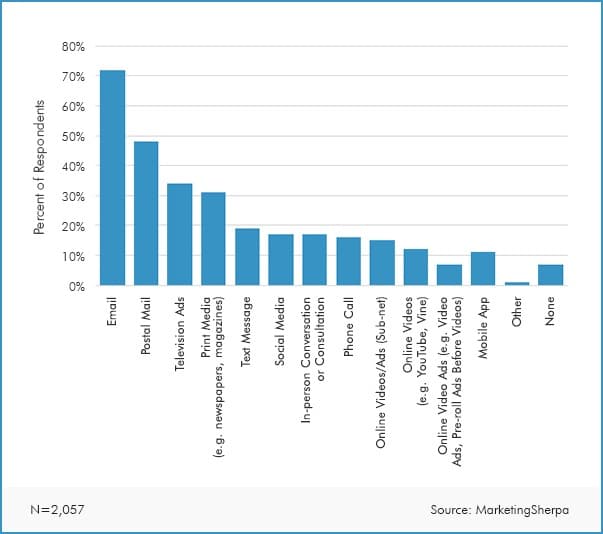
Why should you send customer retention emails?
- Your customer lifetime value (CLV) will increase significantly. The process of upselling and cross-selling other products enables your brand to retain customers and increase revenue potential.
- Enhanced customer experience has a direct impact on brand reputation and customer loyalty. When you take into consideration customer feedback, the likelihood of brand loyalty increases. Businesses that focus on enhancing the customer experience are likely to see an 80% boost in revenue.
- Customer retention emails are cost-effective. Attracting new customers costs five times more than retaining an existing one.
Email marketing generates a high return on investment (ROI). According to a report by DBS data, every $1 spent on a campaign generates $38 in ROI.
Plus, if you achieve a 5% boost in your retention rate, you’ll see a 25-95% increase in profits with a solid customer retention email strategy in place.
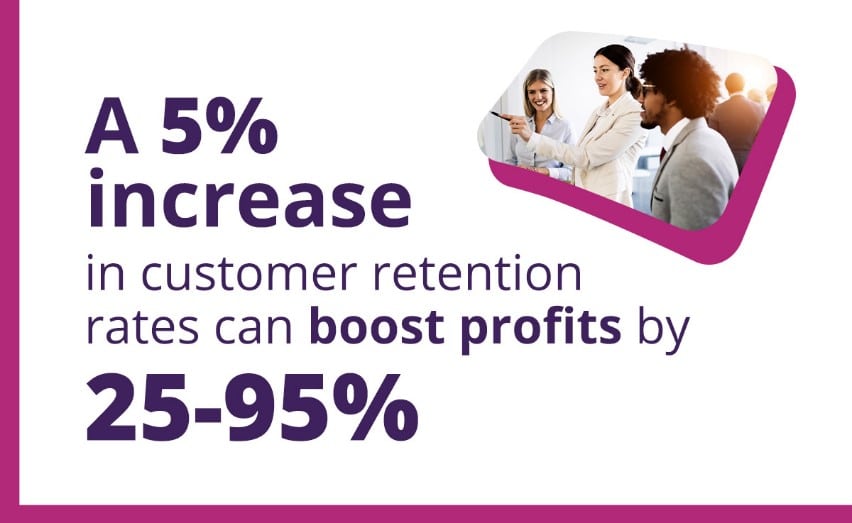
Regular emails are pivotal in maintaining brand recognition. If a customer struggles to remember who you are and what they bought from you, then your campaign may not be successful.
Seasonal trends are good opportunities to send friendly reminders of sales and promotions and maintain brand awareness.
Thus, email marketing has a significant impact on both customer retention rates and revenue. Emails can be tracked, personalized and you can use the analytics you gather to further refine strategies.
So, what exactly does the ideal strategy look like? What sort of elements and factors go into crafting a solid customer retention email strategy?
Let’s delve into five tips that marketers have sworn bolster their efforts and retain customers.
#1. Audit your subscriber list
This is a good practice to undertake before you start creating your email campaign. You need to audit your subscriber list to weed out any customers that have shown a strong disinterest or no response at all to your products/services.
While auditing your list, consider the following three key factors:
- Who are my subscribers?
- What stage of their customer lifecycle journey are they in? (i.e. transaction history, purchasing behavior, etc)
- Have they engaged with my past emails?
Beyond the click-through rate, understanding who your customers are is crucial to the success of your campaign. Segmenting your list into different target audiences with various criteria will help in the personalization of content.
#2. Identity “in limbo” customers
It’s likely that a customer that isn’t getting value from your product or service will churn. You could have a paying customer who’s been dormant for a while or hasn’t yet purchased a product because they’re still unconvinced. These customers are stuck in limbo and require a little push from your side to help them understand the value of your product.
Sometimes there are so many choices available that they get confused. I’ve found myself in this situation many times. Often, brands have sent me emails based on my search history on their website, offering deals. That’s helped me tremendously in making my choice, especially when they sent a curated list of items that I was looking for.
A personalized customer retention email in the form of tailor-made solutions specific to their pain points is a great way to capture their attention. Additionally, reaching out to them on their birthday with a personalized offer can reignite brand interest and facilitate a conversion.
#3. Use what’s working for your current customers
Loyal customers are strong indicators of what you’re doing right. Happy customers are great sources to learn about your product value. A quick survey can reveal why their loyalty lies with your brand.
When you receive customer feedback, analyze the results and pay close attention to the specifics they mention. For example, if 50% of your customer base continually mentions that they like the UI and UX of your app, it’s safe to assume that is a good starting point to message customers.
#4. Ask for feedback
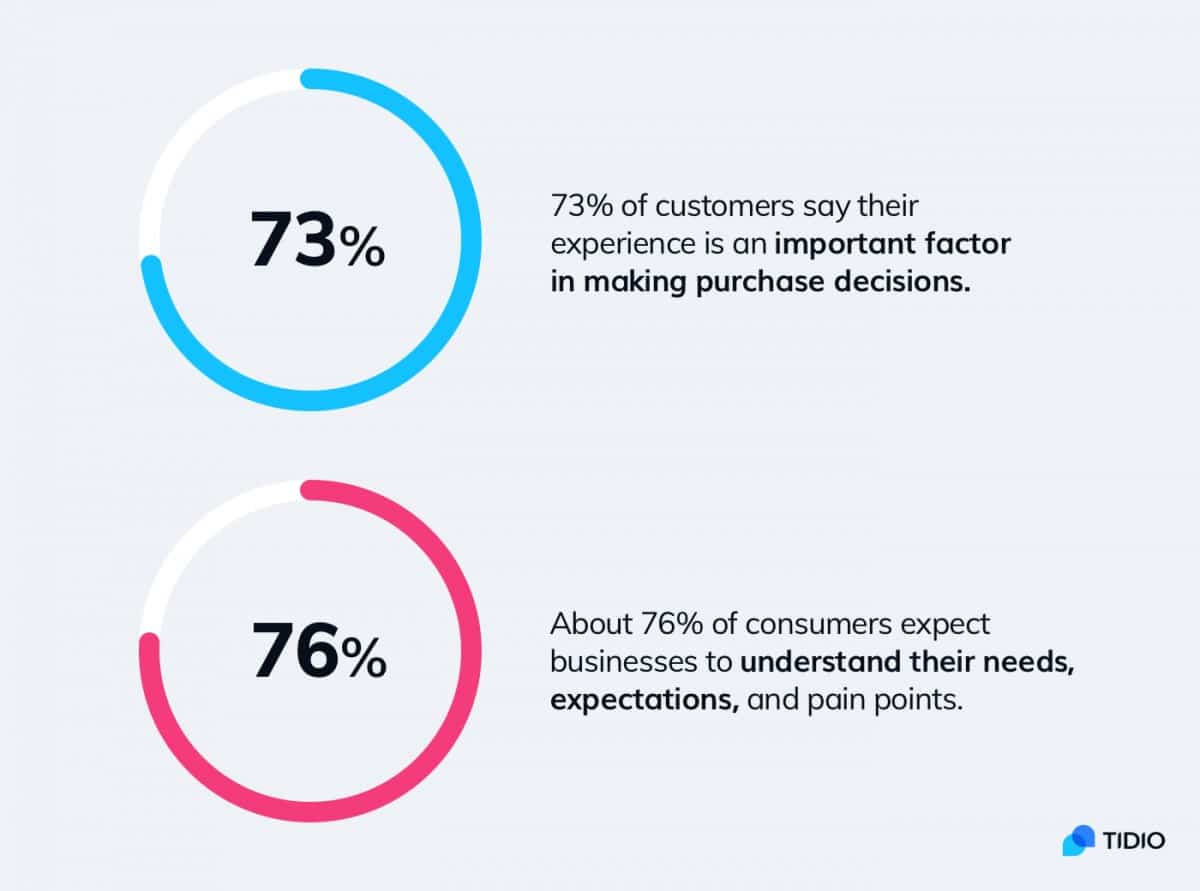
Feedback from customers should be treated like gold, literally! It reveals a lot more than just satisfaction rates. The data will help you fully understand your customer’s requirements.
According to Apptentive, 97% of customers revealed that they are somewhat more likely to stay loyal to a brand that implements their feedback.
Customer feedback is valuable as it also helps organizations identify the areas they need to improve on and fix problems with the products. The responses can also help in understanding more about customer churn rates.
#5. Highlight your value proposition
When communicating with customers that are in limbo (dormant or yet to make a purchase), highlight the value of your product in a way that resolves their pain points.
Even when you’re trying to retain a customer, reiterating and reminding them of your value proposition won’t hurt your case. This is where up-selling and cross-selling come in handy. It allows you to show customers how you can help them further through other products and services you offer.
So, show your customers what sets you apart from your competitors and derive maximum value from your brand. Recently, organizations have also been showcasing their perceived value in the form of corporate social responsibility. While this doesn’t have anything to do with the products or services offered, it adds to the value of your brand.
Ultimately, the goal of your value proposition is to convey what your brand believes in.
6 customer retention emails to send today
Now that you have a better idea of how to improve your strategy, let’s take a look at some practical examples of customer retention emails you could send.
#1 The birthday email
Everyone wants to feel special on their birthday. If a brand remembers your birthday and sends you a personalized offer or deal, you develop a liking for the brand.
One of the most significant advantages of birthday emails is that they’re more likely to convert than any other type of promotional email.
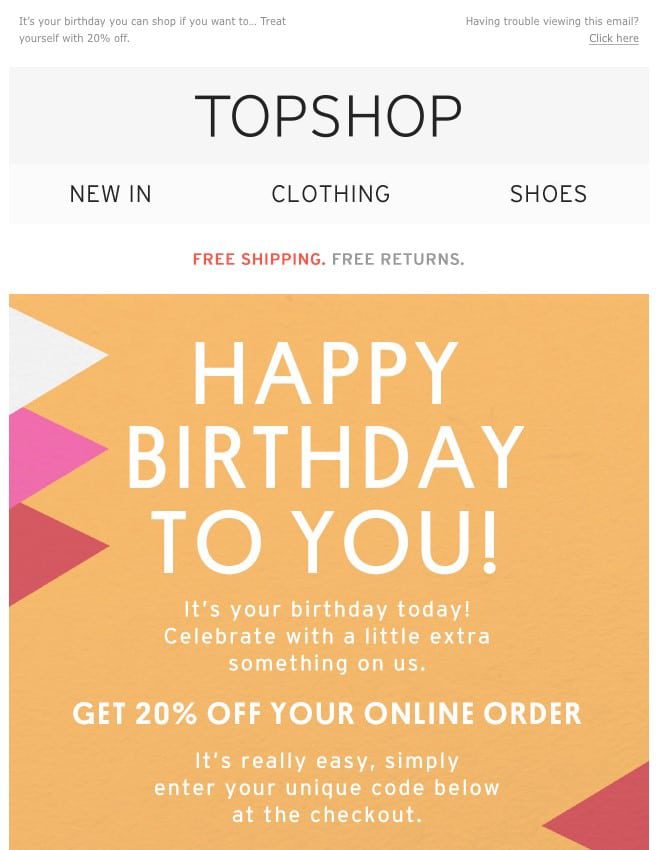
Imagine waking up on your birthday, opening your email, and reading the subject line “Amy, we have a gift for you on this special day.” Wouldn’t that automatically make you feel good?
Moreover, everyone likes gifts! If you already have a strong brand relationship with the customer, this particular email will resonate with them.
A study by Experian found that birthday emails have shown the highest transaction rates than all other promotional emails. Birthday emails generated 481% higher transaction rates and a 53% increase in open rates.

An excellent practice to implement in your birthday email is to have a clear call-to-action (CTA). Whether you’re offering a coupon code or a special discount, the CTA should be clear on how they can obtain the gift.
For instance:
- “Click here to redeem your gift”
- “Shop now”
- “Redeem your 30% discount here”
The text should be in line with the offer; so long as they understand what they’re getting and how they can obtain it.
#2 The upsell email
The beauty of the upselling email is that you already have the customers’ trust. If they already purchased something from you, nudging them to make another purchase won’t be that big of a task.
Upsell emails encourage customers to either upgrade their product or service, purchase additional items or take a new action altogether.
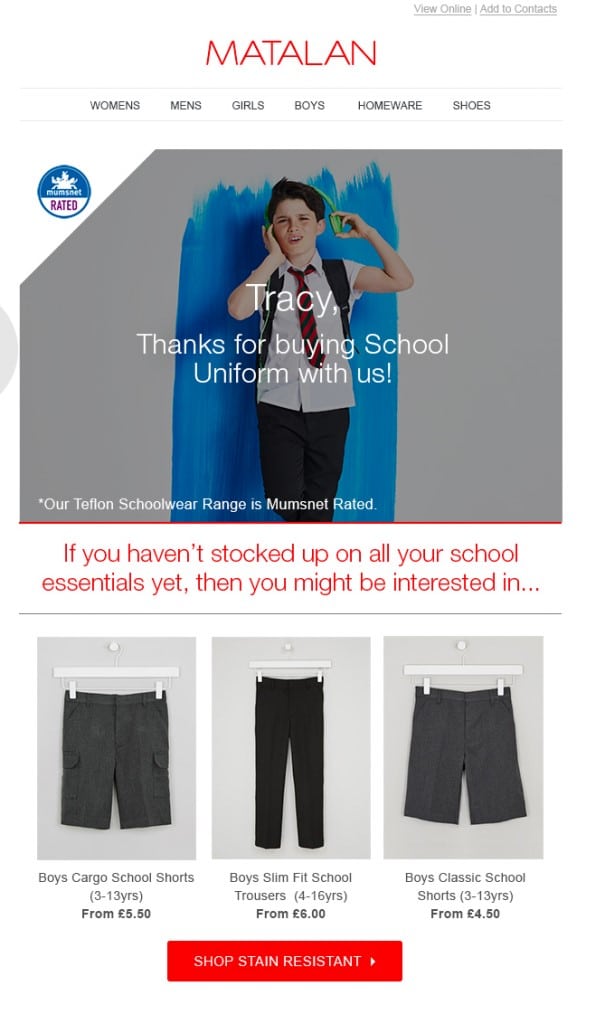
When writing your upsell email, ensure that you include the item(s) they recently purchased. Below that, add recommendations of other products that are alike to their purchase. This is an important step as it shows customers that the email is not random, and the recommendation is personalized to their preferences. This helps your brand establish expertise and value.
Upsell emails act as rungs on the customer loyalty ladder to possibly ascend to higher levels of brand loyalty. With continued spending, brand loyalty increases and the chances of the customer switching to a competitor decrease. This, in turn, adds to the customer lifetime value (CLV) of your brand.
#3 The cross-sell email
A cross-sell email allows you to suggest other similar products based on the transaction history or what they’ve been browsing. The products are complementary in nature.
For example, if someone has purchased a computer mouse, then suggesting a mouse pad is cross-selling. Cross-selling is an excellent method of turning one-time buyers into repeat customers thus increasing customer retention.
Cross-selling emails make the shopping experience easier as most customers shop from their mobile devices. Designing the layout of your email with a clear CTA that leads them to your Ecommerce platform and to the product will propel them to take action faster.
A study by McKinsey revealed that cross-selling can increase sales by 20%.
An effective cross-selling email contains these three main elements:
- It highlights the main purchased product.
- Also, it offers a number of alternate products.
- The emails are a part of an entire cross-sell email series.
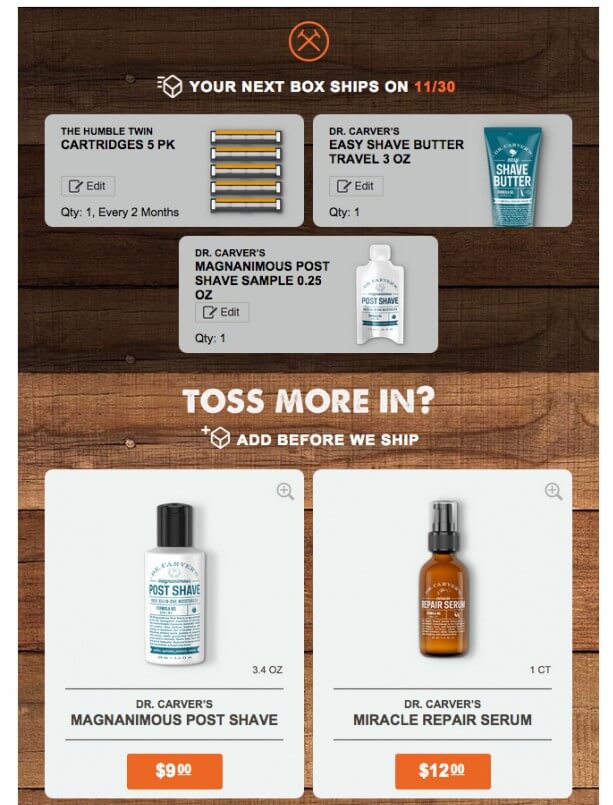
#4 The feedback email
The feedback email is a pivotal component of the customer retention strategy. The goal of this email is to understand the experience of the customer and keep them engaged.
Remember the social element that is at play when it comes to customer satisfaction. Concerto Marketing Group states that 83% of existing customers are likely to recommend your brand to others if they trust your brand.
There are various ways one can seek customer feedback. Here are some of the methods (all-encompassing emailing):
- Directly asking users for their feedback via email and sharing their thoughts by replying.
- Sending a series of questions in the form of multiple-choice or Likert scale questions.
- Sending a Net Promoter Score (NPS) survey (single question survey that measures a customer’s likelihood to refer the brand to others on a Likert scale).
- Asking them specific questions about certain features.
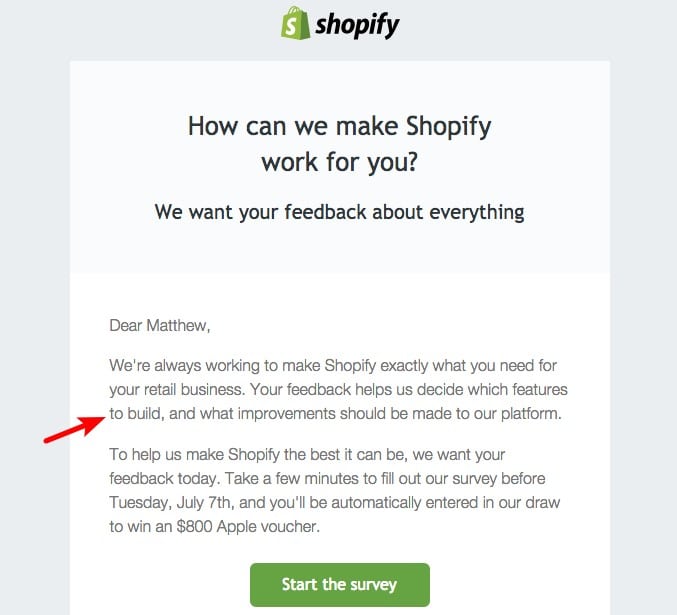
The feedback email request should go out soon after a trigger event, so the customer has a fresh memory of the experience and can provide a proper response.
In your email, ensure you specify how long the feedback process will take and how the response will benefit your brand. Automating feedback emails will simplify your email marketing campaign.
#5 Email for dormant/inactive customers
A lot of brands are under the impression that inactive users are no longer interested. Not the case.
As we’ve mentioned before, it is 3 to 10x more costly to acquire new customers than it is to focus your efforts on inactive customers. Businesses have a 60 to 70% chance of selling to existing customers; as compared to a 5 to 20% chance of selling to new customers.
Inactive customers have previously already shown interest, and emailing them helps reignite the spark. It’s all about re-engaging them.
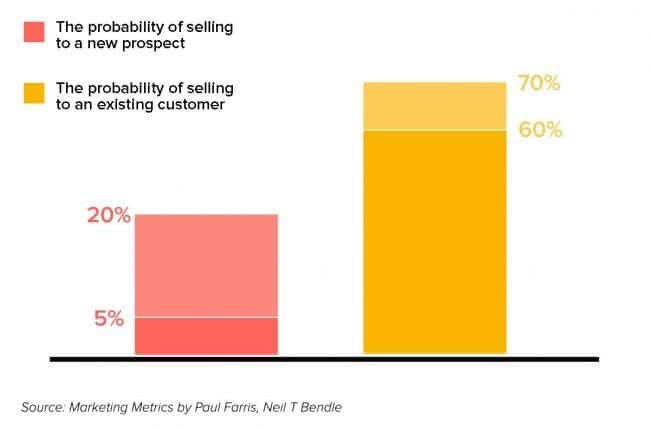
Personalizing your re-engagement email is a good place to start. Subject lines such as: “John, we want you back” or “Amy, we miss you!” are examples of personalized subject lines that resonate with people.
A special discount offering is another way of pulling the customer back in. You can even offer them a small gift, which doesn’t have to be a tangible item. It could be an Ebook or free webinar.
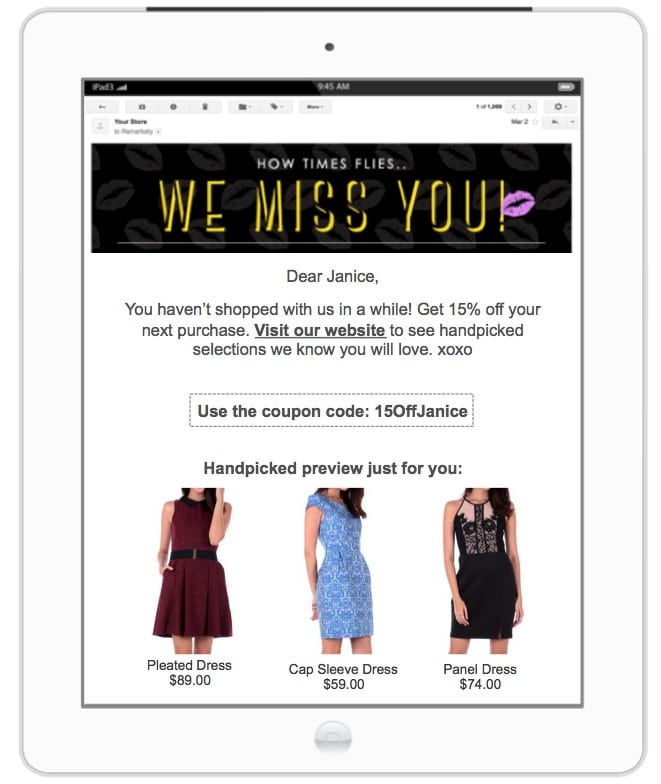
#6 The special occasion email
Staying relevant is important for every brand. Sending emails on special occasions like Christmas, Valentine’s Day, New Year or Mother’s Day keeps your brand on top of customers’ minds.
Moreover, seasonal emails have a higher chance of conversion as the festive season prompts spending on gifts and other products or services.
The content of these emails can include popular purchases for that particular occasion, shopping catalogs, abandoned cart emails or essential items needed for the occasion.
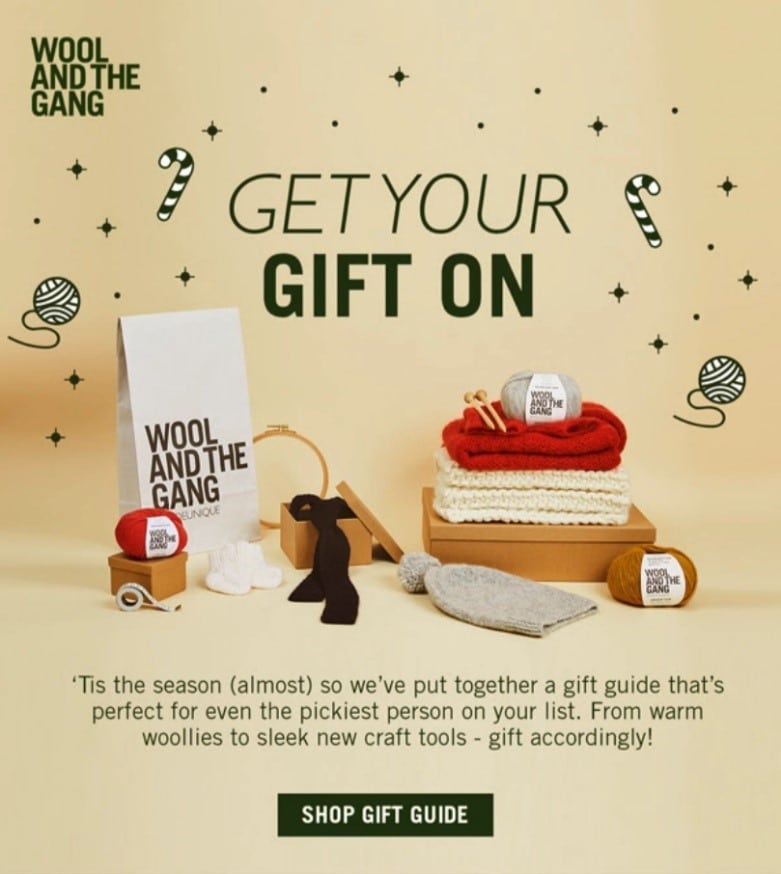
Make personalization your mantra!
Acquiring new customers is indeed important for the growth of any organization. However, nurturing and keeping current customers engaged is equally important.
A myriad of factors influences the decision of the customer to stick around or retain their one-time buyer status. Tailoring your retention strategy to the specific needs and preferences of customers is an excellent idea.
Personalizing your email content by adding personal details about the customer will make them feel special. Remember that customers are individuals with their own set of likes and dislikes. They don’t want to be treated as mere numbers on a balance sheet. 84% of customers want to be treated like a person, and collectively agree that it is a very important factor in winning their business.
Customers churn because they are unable to find value in your product or service. A well-thought-out customer retention email will prompt them into another purchase. Focus on informing the customer of the features or educating them on the effective use of your product or service.
Author: Dhruv Patel is an entrepreneur and co-founder of Saleshandy, a sales engagement platform that helps sales professionals close more deals. He’s an empathetic marketer, people person, SaaS enthusiast, hustler, and growth hacker. Dhruv is passionate about identifying customer needs, measuring success and delight. He loves to write on customer-centric problem solving and growth, enabling customers and businesses to make better decisions.
Table of Contents
- Customer retention and email marketing go hand in hand
- Why should you send customer retention emails?
- #1. Audit your subscriber list
- #2. Identity “in limbo” customers
- #3. Use what’s working for your current customers
- #4. Ask for feedback
- #5. Highlight your value proposition
- 6 customer retention emails to send today
- #1 The birthday email
- #2 The upsell email
- #3 The cross-sell email
- #4 The feedback email
- #5 Email for dormant/inactive customers
- #6 The special occasion email
- Make personalization your mantra!






